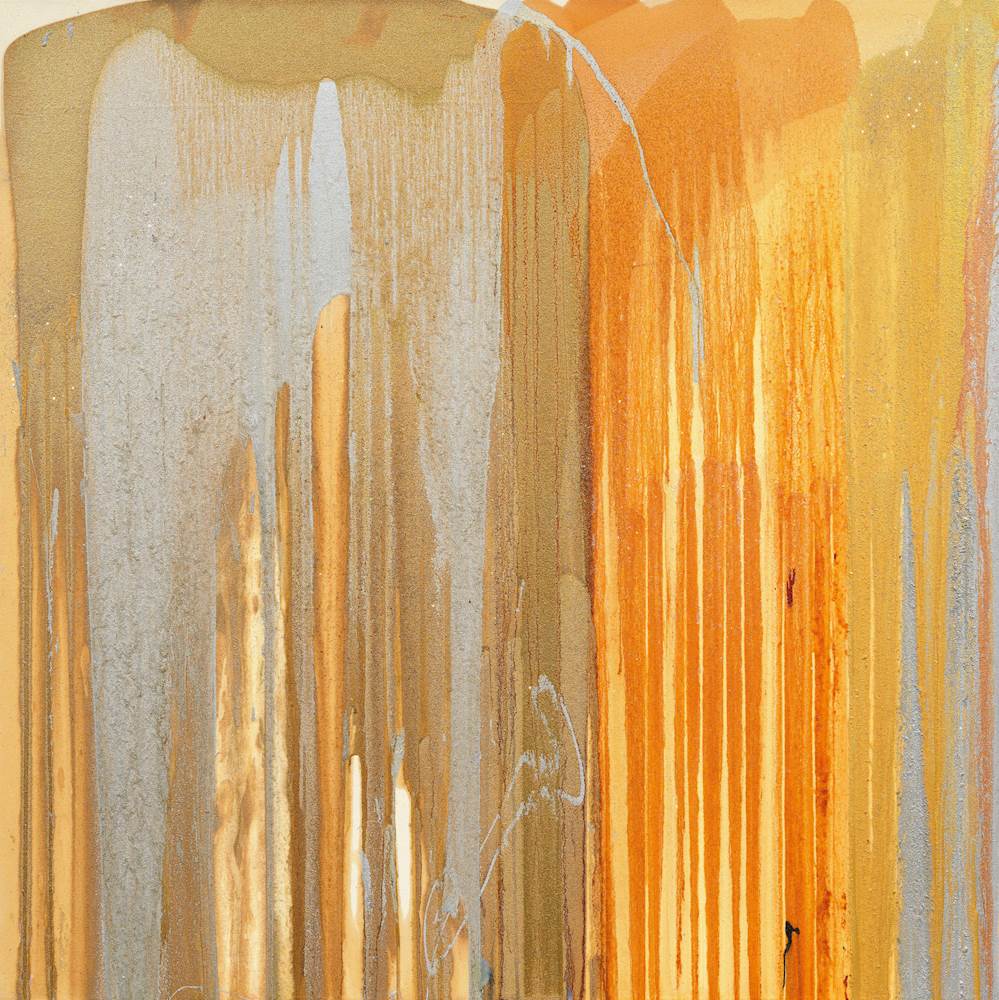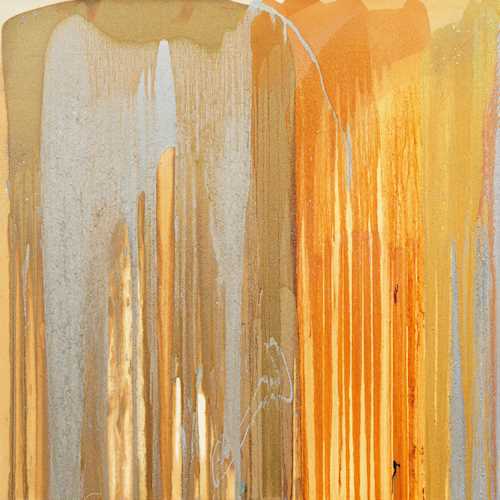
Lot 3443 - A211 PostWar & Contemporary - Thursday, 28. November 2024, 04.00 PM
JOHN M. ARMLEDER
(Geneva 1948–lives and works in Geneva)
Untitled. 2002.
Oil, synthetic varnish, aluminium paint, glitter and glue on canvas.
Signed and dated on the overlap: John Armleder 2002.
100.5 × 100.5 cm.
Provenance:
- Auction Bruun Rasmussen, Copenhagen, 6.6.2018, lot 1341.
- Private collection, Switzerland, acquired at the above auction.
The Swiss artist John M. Armleder has explored a variety of different techniques and styles in the course of his successful artistic career – his polymorphic work includes performances as well as drawings, sculptures and paintings. Within Armleder's oeuvre, in terms of content, the "Pour Paintings" demonstrate his affinity with the Fluxus movement. They also especially highlight his love of experimentation, as seen with his use of materials and techniques.
Armleder's "Pour Paintings", more than almost any other group of works within his œuvre, embody the Fluxus principle of prioritising the creative process over the end result. In particular, they question the traditional concept of artistic genius. The works do not conceal the strategy of their production, but, instead, they explicitly place the production process, which is partly left to chance, at the centre of perception.
The combination of paints, varnishes and glitter particles, as well as the varying transparency or opacity of the colours used in the present work, in combination with the very intuitive and random technique of poured or sprayed paint, create colour gradients that invite the viewer to explore the work. Initially the viewer quite typically and traditionally seeks hidden landscapes or hidden figures among the flowing and dripping forms, but then questions about the production of the work soon come to the fore. How did the artist achieve that visual impact? How do the effects of non-representational work reveal themselves as we view them? What message is conveyed by the artistic decision to turn away from control and consciously focus on and emphasise the creative process?
The work presented here at auction underlines the dialogue between colour and form and invites us to reflect on the creative processes. In this work, Armleder once again demonstrates his ability to integrate conceptual depth into the visual experience: the work invites the viewer to engage with questions of authorship, chance and materiality, finding new ways to test the boundaries of painting by exploring the potential of the material.
Armleder's "Pour Paintings", more than almost any other group of works within his œuvre, embody the Fluxus principle of prioritising the creative process over the end result. In particular, they question the traditional concept of artistic genius. The works do not conceal the strategy of their production, but, instead, they explicitly place the production process, which is partly left to chance, at the centre of perception.
The combination of paints, varnishes and glitter particles, as well as the varying transparency or opacity of the colours used in the present work, in combination with the very intuitive and random technique of poured or sprayed paint, create colour gradients that invite the viewer to explore the work. Initially the viewer quite typically and traditionally seeks hidden landscapes or hidden figures among the flowing and dripping forms, but then questions about the production of the work soon come to the fore. How did the artist achieve that visual impact? How do the effects of non-representational work reveal themselves as we view them? What message is conveyed by the artistic decision to turn away from control and consciously focus on and emphasise the creative process?
The work presented here at auction underlines the dialogue between colour and form and invites us to reflect on the creative processes. In this work, Armleder once again demonstrates his ability to integrate conceptual depth into the visual experience: the work invites the viewer to engage with questions of authorship, chance and materiality, finding new ways to test the boundaries of painting by exploring the potential of the material.
CHF 16 000 / 24 000 | (€ 16 490 / 24 740)
Sold for CHF 24 000 (hammer price)
All information is subject to change.


